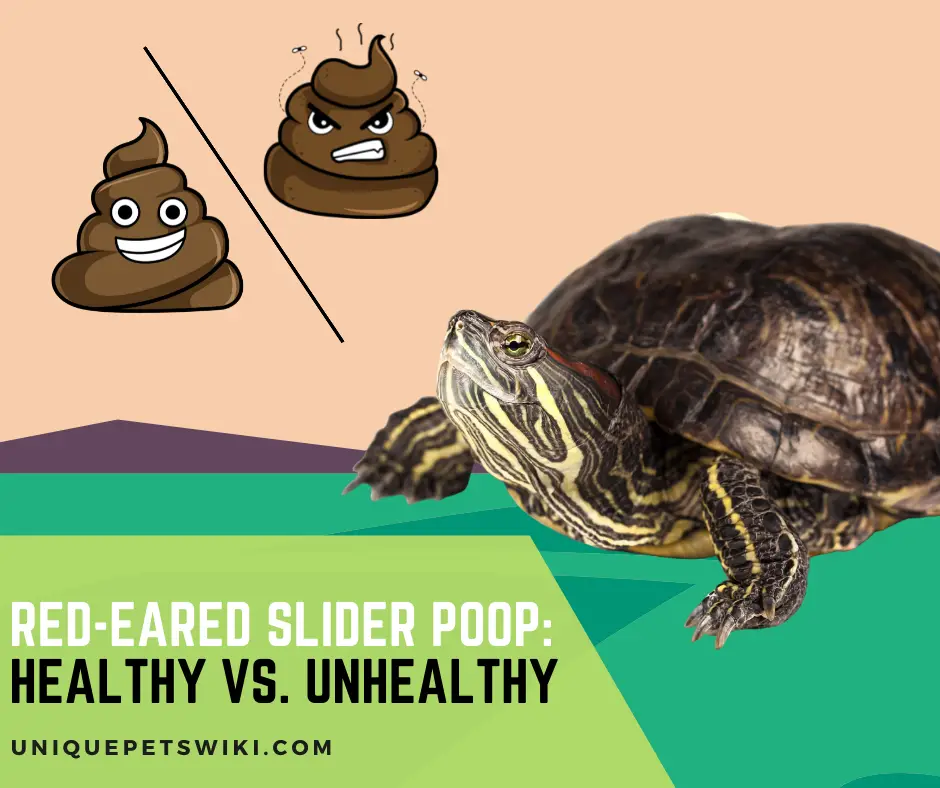Red-eared Slider turtle’s poop can tell a lot about its health. It is essential to know the difference between a healthy and unhealthy Red-eared Slider poop to ensure that your pet is in good condition or not. When do you need to worry and bring them to a veterinary clinic.
As a responsible owner who cares a lot about their pet, knowing this information is imperative in delivering the best care or treatment for your turtle.
With the help of this article, you’ll know how to differentiate between healthy and unhealthy poop.
We’ll describe the signs that your pet’s poop is healthy or unhealthy and the possible causes and treatments. You’ll also know how often they should poop and how to clean it.
Contents
Do Turtles Have Poop and Pee?
Yes, just like other reptiles, turtles also poop and pee to cleanse their body from waste. Turtles excrete their waste through an opening called the cloaca.
Their cloaca is the place where they urinate and defecate, and it is where they also release their eggs, as well as where they breathe.
What Does Healthy Red-Eared Slider Turtle Poop Look Like?
A healthy Red-eared Slider’s poop should be solid and log-shaped. The size of their poop varies on how big or tiny your turtle is. The usual color of a healthy Red-eared Slider turtle poop is shades of brown.
However, the color and consistency of your turtle’s poop will highly depend on their diet.
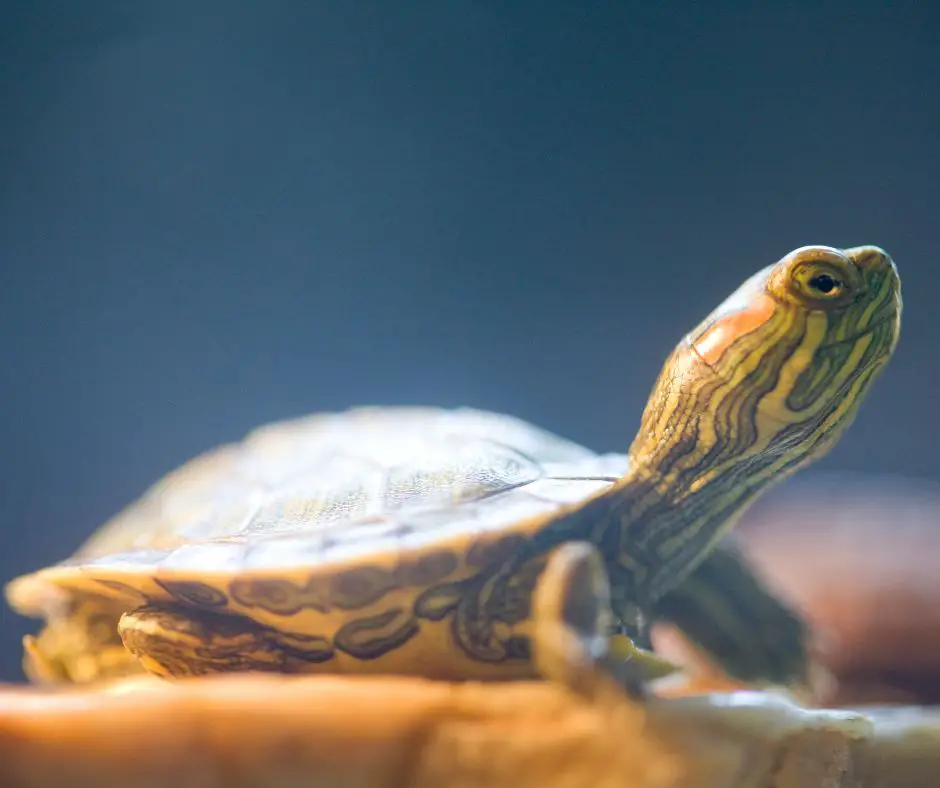
6 Shades of Unhealthy Red-eared Slider Poop
You might notice that your pet’s poop is different than usual. We’ll give six (6) typical cases of an unhealthy Red-Eared Slider poop.
Unusual poop can be signs of illness, so it is crucial to identify the symptoms and causes of an unhealthy poop to treat it accordingly and immediately.
Unusual Color (White, Black)
The color of your pet’s poop could tell a lot about their health. If your Red-eared Slider’s poop has an unusual color, it could signify mild to severe complications or illness.
White poop is pretty standard for turtles, including the Red-eared Slider. This color of poop is entirely normal for a Red-eared Slider. This white poop is often called urates, which are more like urine than poop secreted from their cloaca.
However, it could still be a sign of danger sometimes. If your pet has eaten something bad for them, and it is white-colored, their poop will also be white.
White poop does not require any treatment, as it is normal for most turtles to have white poop. But when your turtle has black poop, it is a different situation, and you should treat your pet immediately by bringing it to a veterinarian.
Black poop is a sign that your pet may have internal bleeding. Your Red-eared Slider may have consumed a harmful or sharp object which couldn’t be digested and caused a blockage.
You might also notice some blood on your pet’s black poop. Your pet has internal bleeding, causing their feces to turn black. If your turtle has black poop, treatment is necessary as soon as possible.
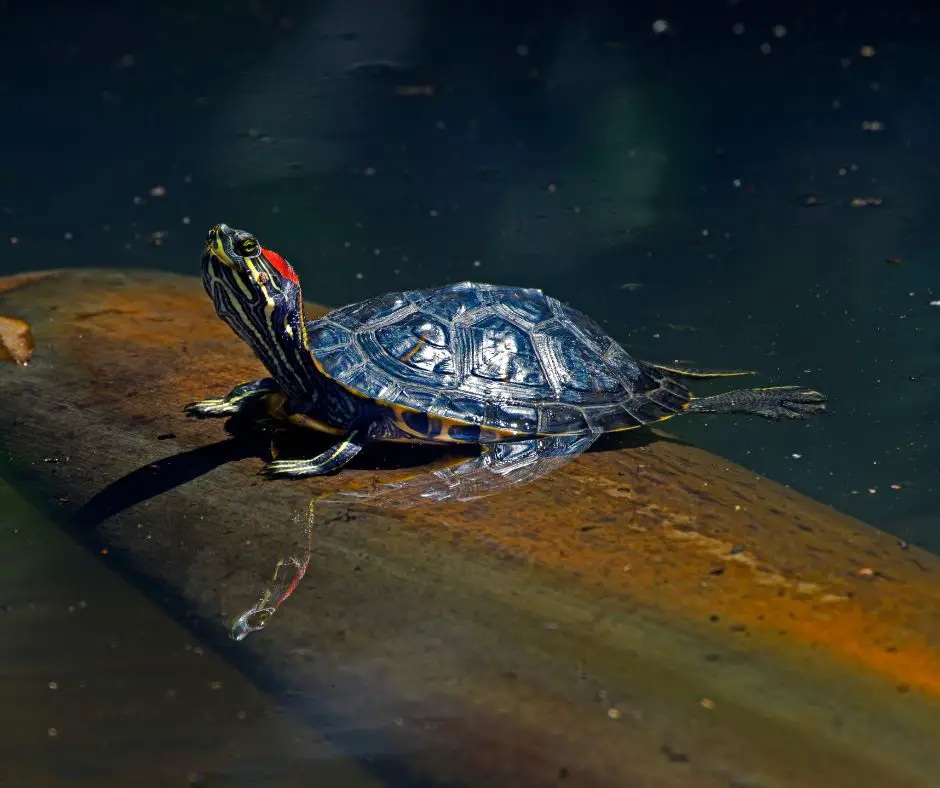
Diarrhea
If your Red-eared Slider has a liquid and soft poop, they have diarrhea. Your Red-eared Slider’s poop should be solid instead of liquid and soft.
There are several causes of your pet’s diarrhea, one of which is poor diet. Your turtle could have diarrhea if it is not getting sufficient nutrients, leading to complications in its digestion.
Another cause of diarrhea on your Red-eared Slider is parasites. If you inspect your pet’s poop, the parasites should be visible. Not treating it immediately can cause severe infestation, which will harm your beloved pet.
Fungal infections are common in Red-eared Sliders. These can lead to illness, so it is advised to visit a pet clinic and get your pet checked and treated.
Constipation
Fiber deficiency could lead to constipation. A warm bath and covering their lower shell can treat constipation. But of course, you should also consider changing their diet and including high-fiber foods.
Be sure to offer them a variety of vegetables and fruits that are high in fiber. You can also try giving them a small amount of reptile-safe laxative to help get things moving again. If their constipation persists, please take them to see a veterinarian for further care.
Pooping a Lot
If your pet is pooping more than usual, there could be underlying problems that may require your attention.
Excessive pooping might be caused by overfeeding. It would be best if you only feed your pet thrice a week while ensuring that their diet consists of healthy foods.
While there are also cases where excessive pooping is caused by parasites such as roundworms, most times, it doesn’t necessarily cause too much trouble. But to an extent, it can cause diarrhea leading to your pet’s weight loss.
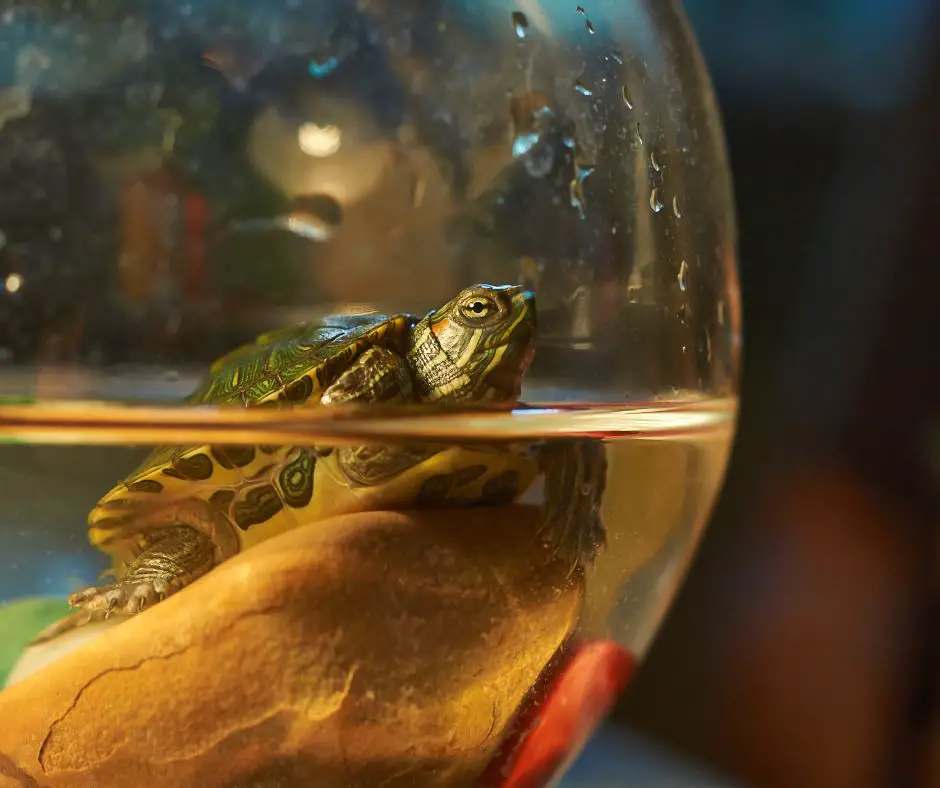
Not Pooping
A Red-eared Slider not pooping is just as bad as pooping a lot. You should worry if your pet is not pooping at all.
One of the reasons could be that the water temperature in your pet’s tank is too low, which could give them difficulty in digesting their food, causing them not to poop. Their water temperature should be around 24°C-26°C or 75°F-78°F.
Your pet might also be constipated. This is caused by fiber deficiency. This problem can be fixed by giving your turtle a warm bath and covering its lower shell. A change in their diet should also be considered.
A more severe cause for your pet not pooping is impaction. Your pet might have eaten some harmful and indigestible objects.
Impaction should be treated immediately by a veterinarian. You can temporarily give them a warm bath if it is impossible to bring them to a clinic yet.
Bad Smell
Your Red-eared Slider’s poop will have a smell just like what a stool would typically smell. But, a turtle’s poop should not have a strong, foul odor unless it hasn’t been cleaned for quite some time.
If your turtle’s poop has an unusually repulsive smelling poop, then there might be some issues in your turtle’s health or digestion
A black poop, accompanied by a bad smell, could be a sign of internal bleeding, and you should bring your turtle to a veterinarian immediately.
How Often Do Red-Eared Slider Poop
Your Red-Eared slider will poop just as often as you feed it. A Red-eared Slider should be provided food three times a week, and it will poop around two or three times a week.
Your turtle has slow digestion, so it would take some time before they poop. It usually takes a day or two before they have entirely digested their food.
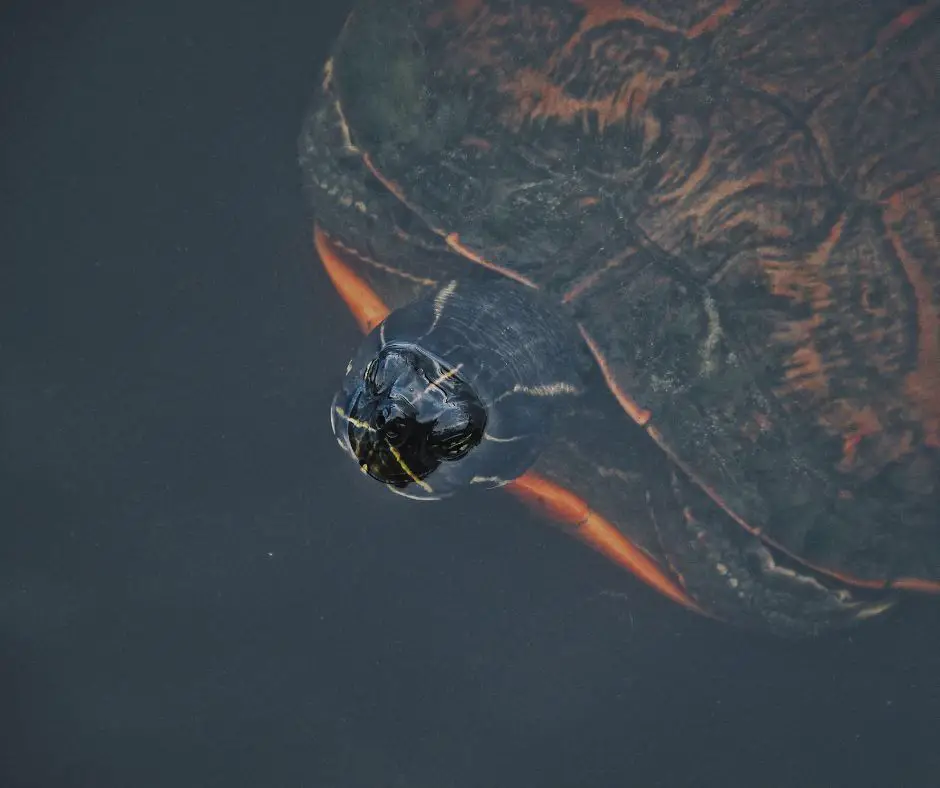
How to Clean Red-Eared Slider Poop
The most basic way to clean a Red-eared Slider poop is to scoop the poop out of the tank or use a net to fish it out. You can also use a gravel cleaner to vacuum the poop at the bottom of the tank.
It would be best if you also removed any food residue to keep the tank clean. You should also invest in a good filter as it benefits your pet. It is recommended to have a partial change of water once a week.
If you’re planning on cleaning the whole tank, you should first put on some gloves for your safety as you’ll be handling the turtle. Take your turtle from the tank and put it in a temporary container.
Then remove everything from the tank; you can start with the electronics, such as lights, heaters, and filters. Then remove the decorations, plants, and rocks. Then drain the water in the tank.
After removing everything, you can now clean the tank with a bleach solution. Also, clean or soak the decors.
Make sure to rinse everything thoroughly and wipe it after. Once you’re done, you can place everything back to its original position and put your turtle back in the tank.
Cleaning the tank should be done at least once a month. You can also try adding ghost shrimps to help clean the tank. The ghost shrimps will eat your Red-eared Sliders’ poop and any food residue in the tank.
Hygger Aquarium Gravel Cleaner
- 【3 in 1 Function】: ① Dirt Suction. Gravel Vacuum for Aquarium equipped with a duckbill suction inlet accessory, and it is easy to suck the feces away. ② Sand Washing. Aquarium siphon with 3D Filter Basket Net, protect your love fish and small gravel from suck out of the aquarium. ③ Water Changing. Built-in dual airbags, atmospheric cavity, good resilience, effortless operation.
- 【Working Principle】: hygger's unique patented design --- equipped with a handle type manual press, which has more operating space and saves labor and brings convenience, by testing the fastest speed is to press 7 times. Sand Washer has 2 thickened airbags inside, which can pump water quickly. And using PP ABS materials, resistance to extrusion, do not worry about airbag damage and leakage, can be used for a long time.
- 【Easy to Use】: Push the siphon switch of the aquarium siphon vacuum cleaner several times, and make sure that the inlet tube part is full of water, and then observe the outlet hose. After the water continuously flows out, you can stop push and observe whether it will automatically. If not, continue to operate until the water will flow out quickly and automatically. The sand can move up and down in the extension tube to remove debris from your aquarium.
- 【Accessories Include】:1 *Air-pressing control body; 2 *Extension Inlet Tube; 1 *Extension tube connector; 1 *User Manual; 1 *Duckbill suction inlet(Debris vacuum); 1 *Outlet hose(79inch PVC Hose),the water pipe can be cut according to demand; 1 *Water Flow Clamp(Flow Control),easily adjust water flow; 1 *Fixture clamp(Water pipe clamp), freely fix, free your hands.
- 【Wide Application】: Aquarium Vacuum Gravel Cleaner is suitable for various types of fish tanks, with spliced extension tubes, two-stage splicing combination, both large and small tanks are suitable, and extension tube can be installed according to demand.Four basic combinations(excluding handle length):2 tubes(31.4inch);2 tubes + head(34inch);1 tube(16inch);1 tube + head accessories(18inch).
Last update on 2022-12-29 / Affiliate links / Images from Amazon Product Advertising API
Do Red-Eared Sliders Eat Their Poop?
Yes, Red-eared Sliders eat their poop, not only their own poop but other red-eared sliders’ poop as well.
This is completely normal behavior for turtles, and it’s called coprophagy. The red-eared sliders eat their poop to consume the healthy bacteria and nutrients in their poop.
Conclusion
In closing, inspecting your turtle’s poop will give you insight into its health and is a convenient and cost-free way to monitor your turtle’s health. Their stool will let you know if they are healthy or suffering from underlying complications.
Red-eared Slider owners need to know the difference between healthy and unhealthy poop. Their poop highly depends on what they eat, so you should pay attention to their diet and ensure that they eat healthy foods.
Some cases of unusual poop can be treated by giving them a warm bath or changing their diet, but in more severe cases, it is best to get your turtle a veterinary treatment.
